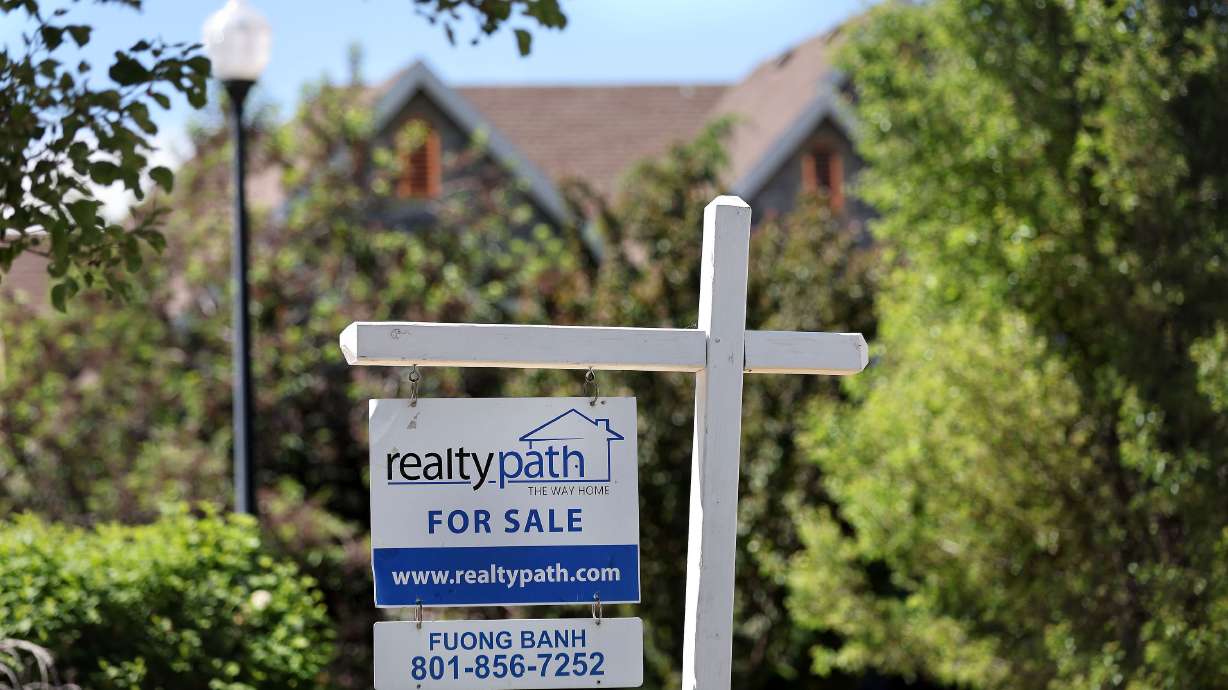Estimated read time: 4-5 minutes
This archived news story is available only for your personal, non-commercial use. Information in the story may be outdated or superseded by additional information. Reading or replaying the story in its archived form does not constitute a republication of the story.
SALT LAKE CITY — Now that mortgage rates have surged to the 6% threshold, a global research company is saying U.S. housing price growth is likely to fall — not this year, but next.
In a post published Monday, Capital Economics predicted the U.S. housing market will see home price growth decline by 5% by mid-2023 — which will then be followed by a "gradual recovery" to 3% annual price growth by the end of 2024.
It's a significant analysis that comes as the U.S. housing market begins to take a turn, with higher mortgage rates pricing out or turning off would-be homebuyers. But at the same time, the firm isn't predicting a dramatic "price crash" or a 2006-like housing bubble burst, which led to the global financial crisis and the Great Recession.
A 5% decline would indeed be a price decrease — but it wouldn't send housing prices into a death spiral.
Keep in mind, housing prices have been on a steady incline for years and accelerated dramatically during the COVID-19 pandemic. A price decline is significant, but in larger context, it would be a relatively small decline.
The median sales price of a single-family U.S. home was $428,700 as of the first quarter of 2022, according to the Federal Reserve Bank of St. Louis' analysis of federal census data. That's a steep over-$100,000 incline from just two years ago, when the median U.S. sales price was $322,600 in 2020.
What's happening: Previously, Capital Economics said that a mortgage rate above 6% would be the "threshold at which house price falls become likely." Now that rates have hit that threshold, the company has revised its house price forecast.
- "That said, the prevalence of fixed-rate mortgages, tight credit conditions and a relatively healthy labor market still rules out a price crash," wrote Matthew Pointon, senior property economist for Capital Economics. "We now expect annual house price growth will fall to (minus) 5% by mid-2023, followed by a gradual recovery to 3% by end-2024."
Pointon noted Capital Economics previously claimed the U.S. would "avoid an outright fall in house prices. After all, most borrowers are protected by a fixed-rate mortgage, levels of home equity are high, credit conditions have been tight over the past couple of years and the chance of a large rise in unemployment is slim."
For those reasons, forced home sales don't seem likely — and that would "keep the market relatively tight and support house prices," Pointon wrote.
However, "we have also argued that house prices will come under pressure if mortgage rates rise above 6%," Pointon noted. Add in the Federal Reserve's battle against inflation, which has led to aggressive borrowing rate hikes, and that's translated to increased pressure on buyers, many of which are simply priced out.
- "At 6%, the median income household looking to buy the median-priced home today will have to put close to 25% of their income toward mortgage payments, higher than the previous record of 24% seen in the mid-2000s," Pointon wrote.
Leading up to the 2006 housing bubble, the U.S. housing market was largely propped up by extremely risky bank lending practices that created a synthetic demand for housing, enabling many to purchase homes that they could not afford to keep. Today's market does not have those same conditions, experts have said.
Mortgage rates are now so high, combined with the nation's record housing prices, that homebuyer hopefuls are simply locked out. On Tuesday, the average rate for a 30-year fixed mortgage was 6.01%, according to Bankrate.com.
- "With no sign that lenders are set to aggressively ease lending standards, that deterioration in affordability will shut many potential buyers out of the market," Pointon wrote, noting the share of first-time home buyers has dropped to a 13-year low.
- "And for those still in a position to buy a home, the surge in mortgage rates means many will have to cut their budget," Pointon noted. "That will reduce the competition for homes, and sellers will eventually see the need to accept a lower price for their property."
Housing market predictions for 2023: Capital Economic predicts mortgage rates are set to rise to 6.5% heading into 2023.
"Assuming house price growth follows our previous forecast and slows to zero by mid-2023, that profile for interest rates would leave mortgage payments above their mid-2000s peak until mid-2023," Pointon wrote.
"That looks unsustainable and house prices are therefore set to fall. However, our previous point about a lack of forced sellers remains. Therefore, we expect lower home demand to lead to a relatively small fall in house prices, with annual growth dropping to (minus) 5% (year over year) by mid-2023," Pointon added. "That would bring the mortgage payment burden back under the mid-2000s level by the start of 2023."









